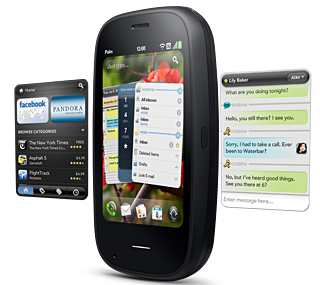WebOS: The Other Smartphone/Tablet Linux


Regardless of what I think, the rumor-mill is going full-speed ahead that, on February 9th, HP will be showing off new smartphones, tablets and maybe even netbooks running webOS. Some folks, like James Kendrick, think that this news would be the cat's meow. "Of all the product categories HP is considering for webOS, the tablet has me excited as I believe the OS is so fitting for the tablet form that it can take the competition by storm." Really? Much as I like the idea of Android on tablets, once Google clears up exactly what it's doing for programmers with Android for different platforms, I can't see anyone storming Apple's iPad anytime soon.
As Sean Portnoy points out though, "Apple has the early advantage and the ubiquity of Android means it will grab a big share of the tablet market just as it's done with smartphones." Exactly so. That being the case, what does webOS bring to the table that will blow the others away? Or, for that matter, even make HP's offerings competitive?
WebOS, like both Android and MeeGo, is based on Linux. It also uses a lot of other open-source components such as BusyBox, the Swiss-army knife of embedded Linux command sets; the GStreamer multimedia library; and numerous other common Linux programs.
On top of this though, developers will find the webOS software developer kit (SDK) with the Mojo Framework and the Plug-in Development Kit (PDK). None of these are open source . With the SDK and Mojo, programmers can create Web-based applications using JavaScript, Cascading Style Sheets (CSS), HTML and the WebKit open-source, Web-browser engine. The PDK, which enables the use of C and C++, can be used to port applications from other platforms, such as the iPhone, to webOS devices.
For users, so far, webOS offers such features as JustType and HP Synergy. JustType enables you to simply start typing and then pick the application that you want to act on whatever you just typed in. So, for example, if you typed in "Pizza," you could either do a Google search for the word or choose to find the closest pizza joint on Google Maps. Synergy gives you a single interface to your social networking, instant-messaging and e-mail from multiple sources automatically. So, for example, you can see your friends' Facebook status; read your Gmail and Exchange mail; and view your AOL and Yahoo IMs in one place.
This is all well and good, but when you put them all together, will this make the forthcoming HP webOS family compelling to either developers or users? I can't see it.
If this had appeared last year, just as Apple was rolling out the iPad, sure, it could have been a contender. But today? With a swarm of Android tablets finally arriving to the market? With the iPad 2 just months away? Sorry HP. Too little, too late.